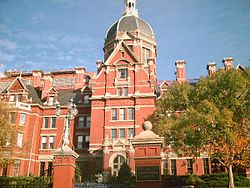 This won’t be as bad as making laws or sausage but there will be details.
This won’t be as bad as making laws or sausage but there will be details.
In the 1980’s the relationship between medical schools and their hospital changed. Until then the school’s parent university owned and the medical school managed the hospital. The advent of managed care programs and shrinking hospital and physician reimbursement created worry in universities that their hospitals would become money losers. This led them to let the hospital stand alone as a not-for-profit entity. Governance was orchestrated so that the university/medical school remained involved with hospital activities and the decision-making process. All or most physicians were medical school faculty employed by the medical school. The medical school dean and the hospital CEO are partners who plan together. This arrangement describes academic medical centers. Newer medical school are frequently based in community hospitals. Their faculty practice alongside private practitioners and they have no significant relationship with the hospital.
The most successful academic medical centers are characterized by a close and open relationship between school and hospital. Ideally both institutions, from the top (school Dean and hospital CEO) to bottom (school physicians and hospital employees) see themselves as part of a single “team.” The school is responsible for physician activities and the hospital for their work environment. They coordinate and plan together. Seems obvious this is the foundation for success; but, it doesn’t always happen. When the hospital isn’t transparent (e.g., with its financial data} or the school doesn’t coordinate physician activities consistently with hospital needs, dysfunction is the result. This latter scenario is more common in settings where a school has a new hospital partner. This can happen for a variety of reasons; most frequently where the previous hospital was purchased by another.


